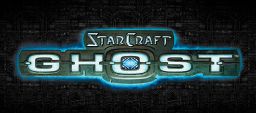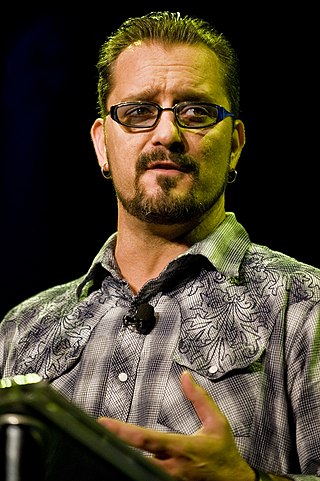StarCraft is a real-time strategy video game franchise by Blizzard Entertainment.
Contents
Starcraft or StarCraft may also refer to:
StarCraft is a real-time strategy video game franchise by Blizzard Entertainment.
Starcraft or StarCraft may also refer to:

StarCraft is a real-time strategy video game developed and published by Blizzard Entertainment for Microsoft Windows. The first installment of the video game series of the same name, it was released in 1998. A Classic Mac OS version was released in 1999, and a Nintendo 64 port co-developed with Mass Media and published by Nintendo was released in 2000.

StarCraft: Ghost was a military science fiction stealth-action video game developed by Blizzard Entertainment. It was intended to be part of Blizzard's StarCraft series and was announced in September 20, 2002. It was to be developed by Nihilistic Software for the GameCube, Xbox, and PlayStation 2 video game consoles. Several delays in development caused Blizzard to move back the release date and the game has not materialized. Nihilistic Software ceded development to Swingin' Ape Studios in 2004 before Blizzard bought the company, and plans for the GameCube version were canceled in 2005.

Sarah Louise Kerrigan, the self-styled Queen of Blades, is a character in Blizzard Entertainment's StarCraft franchise. She was created by Chris Metzen and James Phinney, and her original appearance was designed by Metzen. Sarah Kerrigan is voiced by Glynnis Talken Campbell in StarCraft and Brood War, Tricia Helfer in StarCraft II: Wings of Liberty, Heart of the Swarm and Legacy of the Void, and Vanessa Marshall in Heroes of the Storm.

BlizzCon is an annual gaming convention held by Blizzard Entertainment to promote its major franchises including Warcraft, StarCraft, Diablo, Hearthstone, Heroes of the Storm, and Overwatch.

Sam "Samwise" Didier is an American artist. He served as senior art director at Blizzard Entertainment, having been with the company since 1991. As the art director for the flagship games of the Warcraft, StarCraft, and Diablo franchises, the producer of several games, and an artistic contributor to almost every game released under the name Blizzard Entertainment, Didier has created a distinctive Blizzard house style. Edge described Didier's style as "a striking, pulp sensibility that may be an acquired taste, but one acquirable on either side of the Pacific, side-stepping polarisation of appeal to either eastern or western audiences." His other contributions to Blizzard projects include writing, voice acting, music, sculpture, the Pandaren species, and the name "Warcraft". Leonardo Marcato calls him "one of the game designers that can be legitimately called authors thanks to the imprint they gave to projects they directed."

Christopher Vincent Metzen is an American game designer, artist, voice actor, and author known for his work creating the fictional universes and scripts for Blizzard Entertainment's three major award-winning media franchises: Warcraft, Diablo and StarCraft. Metzen was hired by Blizzard Entertainment as an animator and an artist; his first work for the company was with the video game Justice League Task Force.
StarCraft: The Board Game, published by Fantasy Flight Games, is a game inspired by the 1998 computer game StarCraft. Players take control of the three distinctive races featured in the video games, the Terrans, the Protoss, or the Zerg, to engage in battle across multiple worlds in order to achieve victory. Each of the three races features a fairly different playing style. A prototype of the game was shown in BlizzCon 2007, with pre-release copies sold at Gen Con 2007 and Penny Arcade Expo 2007. It was publicly released in October 2007.
The Swarm may refer to:
StarCraft is a military science fiction media franchise created by Chris Metzen and James Phinney and owned by Blizzard Entertainment. The series, set in the beginning of the 26th century, centers on a galactic struggle for dominance among four species—the adaptable and mobile Terrans, the ever-evolving insectoid Zerg, the powerful and enigmatic Protoss, and the godlike Xel'Naga creator race—in a distant part of the Milky Way galaxy known as the Koprulu Sector. The series debuted with the video game StarCraft in 1998. It has grown to include a number of other games as well as eight novelizations, two Amazing Stories articles, a board game, and other licensed merchandise such as collectible statues and toys.

StarCraft II: Wings of Liberty is a science fiction real-time strategy video game developed and published by Blizzard Entertainment. It was released worldwide in July 2010 for Microsoft Windows and Mac OS X. A sequel to the 1998 video game StarCraft and the Brood War expansion pack, the game is best known as the original installment of StarCraft II which was later followed by a number of expansion packs. Wings of Liberty has been free-to-play since November 2017.
StarCraft II is a military science fiction video game created by Blizzard Entertainment as a sequel to the successful StarCraft video game released in 1998. Set in a fictional future, the game centers on a galactic struggle for dominance among the various fictional races of StarCraft.

The Korea e-Sports Association (KeSPA) is a South Korean body established to manage esports in South Korea. It is a member of the Korean Olympic Committee and the International e-Sports Federation. As of June 2012, it was the managing body for 25 e-sports in the country, including Starcraft II: Legacy of the Void, League of Legends, Dota 2, and Counter-Strike: Global Offensive. KeSPA also hosts the KeSPA Cup, a yearly tournament event for some of their games.

Robert Clotworthy is an American voice actor and narrator. He is best known as the narrator for the History Channel series Ancient Aliens and The Curse of Oak Island and his role as the voice of Jim Raynor in the StarCraft video game series.
Michael Lamond, more commonly known by his online alias Husky or HuskyStarcraft, is a former esports commentator, YouTuber, director, producer, and voice actor. He is best known for his work in esports, most notably for his commentating on StarCraft II, a video game published by Blizzard Entertainment. He regularly appeared as a commentator at StarCraft tournaments, with his commentary being viewable through various YouTube channels.

Nicolas Plott, known by his alias Tasteless, is an American esports commentator. He moved to Seoul, Korea in 2007 to give commentary to e-sports competitions. He has provided commentary for multiple Starcraft and Starcraft 2 tournaments. Together with Dan "Artosis" Stemkoski, he currently provides commentary for Global StarCraft II League and AfreecaTV StarLeague games.
Game engine recreation is a type of video game engine remastering process whereby a new game engine is rewritten from scratch as a clone of the original with the ability to load the original game's data files such as music, textures, scripts, shaders, levels, and more. The new engine should read these data files and, in theory, load and understand them in a way that is indistinguishable from the original. The result of a proper engine clone is often the ability to play a game on modern systems that the old game could no longer run on. It also opens the possibility of community collaboration, as many engine remake projects tend to be open source. Game engine recreation can be beneficial to game publishers because the legal use of a re-creation still requires the original data files, as a player must still purchase the original game in order to legally play the re-created game.

StarCraft: Remastered is a remastered edition of the 1998 real-time strategy video game StarCraft and its expansion Brood War, which was released on August 14, 2017. It retains the gameplay of the original StarCraft, but features ultra-high-definition graphics, re-recorded audio, and Blizzard's modern online feature suite. The remaster was developed over the period of a year and included playtesting from professional StarCraft players.
Professional StarCraft II competition features professional gamers competing in Blizzard Entertainment's real-time strategy game StarCraft II. Professional play began following the game's initial release in 2010, as the game was the sequel to StarCraft, considered one of the first esports and the foundation of South Korea's interest and success in competitive gaming. Between 2016 and 2019, competition was centered around the Global StarCraft II League in Korea and the World Championship Series Circuit everywhere else, with all Blizzard-sanctioned events being under the StarCraft II World Championship Series (WCS) banner. Since 2020, Blizzard changed the format of WCS by entering into a three-year partnership with esports organizers ESL and DreamHack.